Pickleball 101: Essential gear and court setup
Before stepping onto the court, players must first get acquainted with the essential gear and setup that governs the game of pickleball. Each piece of equipment holds its own significance, impacting performance and enjoyment. From the paddles they wield to the very surface they play on, every detail counts like the brushstrokes of a masterpiece, every element comes together to create a harmonious playing experience.
Pickleball paddles: Choosing your weapon
When it comes to pickleball paddles, the choices can be overwhelming. Players must consider several factors, such as materials, weight, and grip size.
- Materials: Paddles can be made from wood, composite, or plastic. Each material offers unique advantages in terms of weight and durability.
- Weight: A heavier paddle can provide more power, while a lighter paddle can enhance control and maneuverability.
- Grip Size: Proper grip size is vital for comfort and control. A grip that's too small or large can lead to fatigue and poor performance.
Choosing the right paddle is akin to selecting a paintbrush for an artist; the right tool can enhance one's game significantly, allowing for greater precision and finesse.
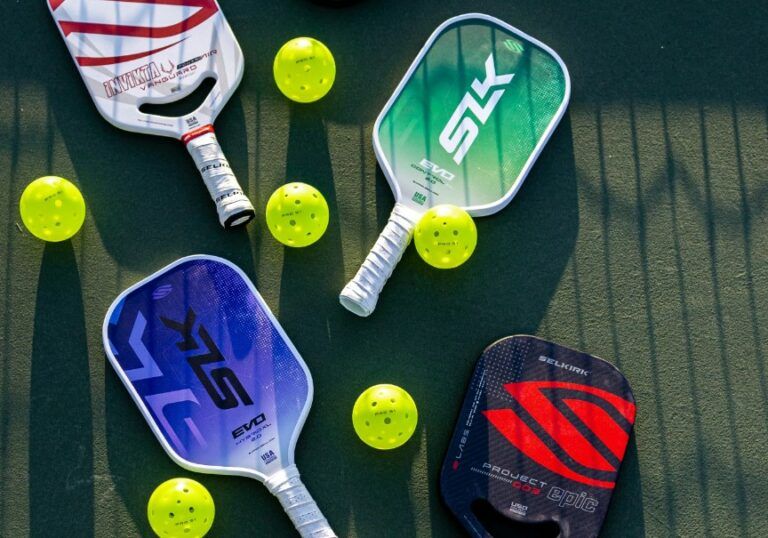
Pickleballs: Not all balls are created equal
Just as a painter has various colors to choose from, players must select the right type of pickleball for their match.
- Types: Indoor balls are typically softer and have larger holes, while outdoor balls are made to withstand wind and have a firmer texture.
- Construction: Understanding the nuances between these balls can dramatically affect gameplay. For example, choosing a ball that's too light for windy conditions can lead to disastrous returns.
The choice of the ball may seem trivial, but much like how the right note can turn a melody into a symphony, the right pickleball can elevate an entire match.
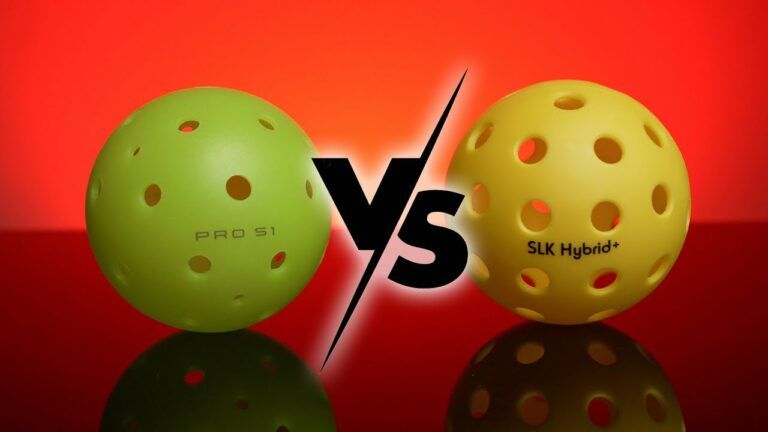
Understanding the pickleball court
To play effectively, players must grasp the layout of the pickleball court. Familiarity with the dimensions and zones can greatly influence strategy and performance.
- Court Dimensions: The court measures 20 feet wide by 44 feet long for doubles matches, with the non-volley zone or "kitchen" extending 7 feet from the net on either side.
- Service Areas: Ensuring accurate placement while serving can dictate the pace of the game.
Understanding the court is your map to success; the better you know your territory, the more strategically you can play.
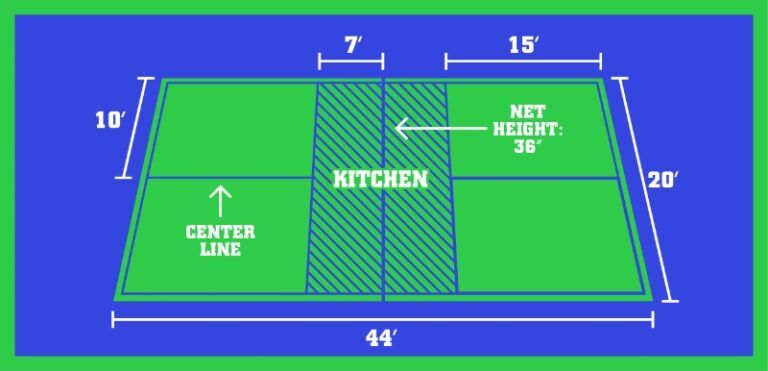
Serving up success: Double pickleball rules
The serve is often considered the cornerstone of pickleball. A well-executed serve can set the tone for a point, acting as a strategic weapon in a player's arsenal. Players must familiarize themselves with the nuanced rules governing this fundamental aspect of the game.
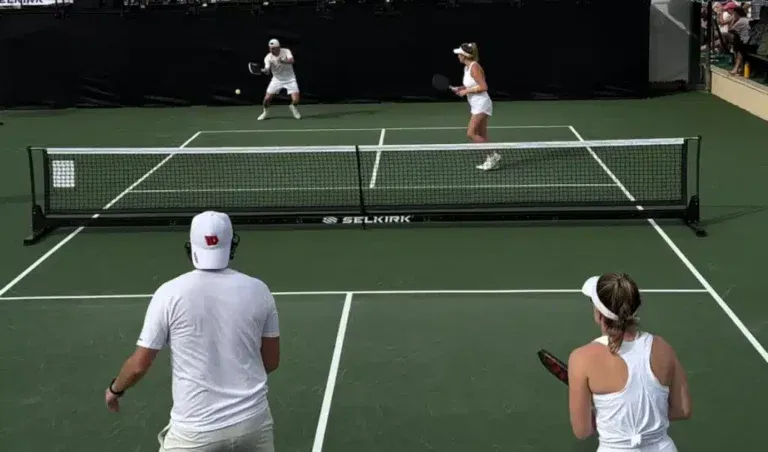
Legal serving mechanics
The mechanics of a pickleball serve hold particular importance.
- Underhand Serve: A legal serve must hit the ball below the waist, allowing for a gentle yet effective start to the rally.
- Paddle Contact: Players must make contact with the ball using the paddle, ensuring a clear strike without any additional actions that could be deemed illegal.
- Foot Placement: Serving with one foot behind the baseline and the other in the court ensures compliance.
Fostering a good serving technique is akin to mastering the first stroke of a painter's brush it's the foundation from which all else builds.
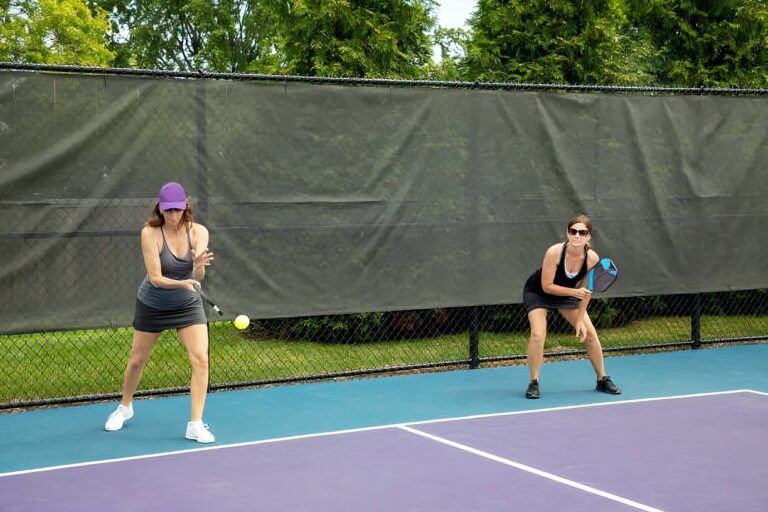
Serving diagonally: Targeting the right service court
When executing a serve, awareness of the service court is paramount.
- Diagonal Serve: The serve must land in the opponent's diagonal service court. This rule may seem simple, but illustrates the necessity of strategic placement.
Using the court's angles effectively can drastically alter the dynamics of the game, forcing opponents to adapt and react, much like chess players anticipating their opponent’s next move.
Drop serve: A sneaky variation
Among the various serving techniques, the drop serve is an intriguing option.
- Rules & Technique: With its relaxed rules, players can bounce the ball before striking it, removing the tension typically associated with service execution.
This technique, when executed strategically, serves to keep opponents off balance an unexpected twist in the rhythm of gameplay.
Service sequence and server numbers
Understanding the server numbers and rotation adds another layer of complexity to gameplay.
- Rotation: The serving team must alternate between players. The first player serves from the right side of the court upon winning the serve.
Navigating the sequence can be a tactical advantage, allowing teams to exploit weaknesses as they unfold throughout the match.
Decoding the double bounce rule
The double bounce rule is a cornerstone of pickleball regulations. This rule not only shapes the way rallies develop but also influences players' strategies, ensuring that the game remains fair and dynamic.
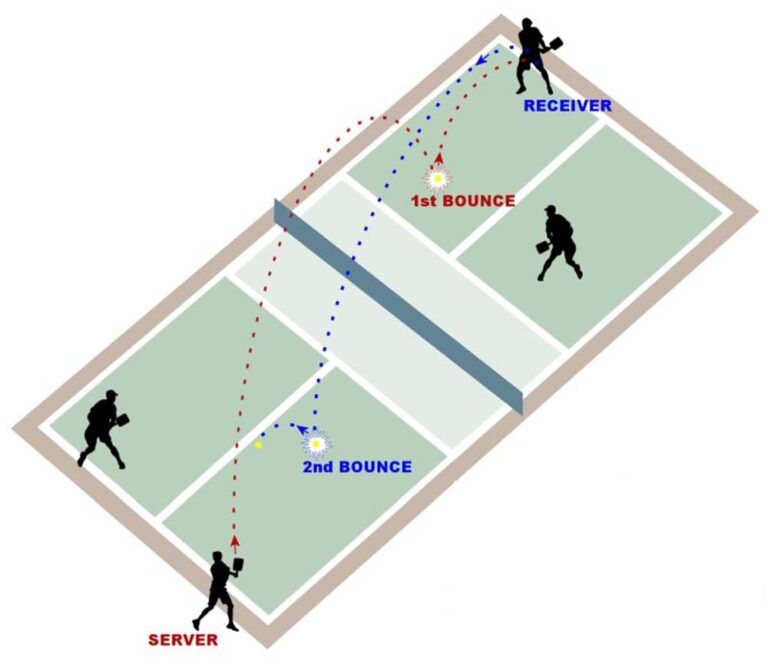
Double bounce rule explained
The essence of the double bounce rule is that the ball must bounce once on each side before players can volley. This mechanism addresses the importance of ensuring that rallies remain exciting and involve both teams.
- Definition & Purpose: The rule mandates that players must allow the ball to bounce after their serve before returning, enforcing periods of reflection and strategy.
By inserting this rule, pickleball invites players to develop their skills in a dynamic environment, where each decision is laden with potential consequences.
Strategic implications of the double bounce rule
The strategy designed around the double bounce rule is multifaceted.
- Extending rallies: By enforcing this rule, players are offered more time to set themselves up for a successful play, fostering longer rallies.
The endurance built during these extended exchanges mirrors the marathon-like mental engagement athletes encounter in any sport each point becomes a battle of wits and stamina.
Navigating the "kitchen": Non-volley zone rules
The non-volley zone, affectionately known as the kitchen, is a pivotal area on the pickleball court. This space ignites creativity and finesse, inviting players to engage with the game in a distinctive manner.
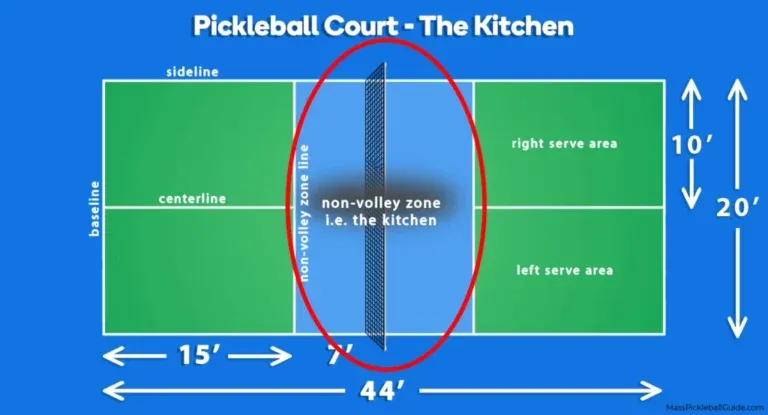
The non-volley zone: A safe haven?
The concept of the non-volley zone is to ensure that players do not gain unfair advantages near the net.
- Boundaries: This area, positioned 7 feet from the net, dictates where volleys are allowable. Players must stay out while executing their shots, maintaining fairness in play.
Much like the safe havens in a game of tag, this zone encourages tactical thinking and positioning as players engage in a delicate dance around its limits.
Volleying restrictions: Staying out of trouble
Violating the non-volley zone rules can be costly!
- Faults: Players committing faults by stepping into the kitchen when attempting to volley initiate a breakdown in their strategy. Understanding this can prevent heaps of frustration.
Effective communication among teammates about positioning can be the key to reigning in violations, ensuring both players can capitalize on their strengths while mitigating mistakes.
Dinking: The art of the soft touch
One of the most refined skills in pickleball is "dinking."
- Technique & Strategy: A dink involves a gentle shot that arcs over the net into the kitchen, enticing opponents to make choices that could lead to a significant advantage for the dinker.
This soft touch is the pickpocket's hidden technique, silently waiting to catch opponents off guard while keeping the game alive and engaging.
Controlling the kitchen line: A key to doubles success
Mastering the kitchen line is crucial for doubles teams.
- Kitchen Line Strategy: Effective positioning along this line creates opportunities for quick reflex plays and powerful volleys.
Managing space tactfully allows players to dictate the pace; think of it like navigating a tightrope, where one misstep can lead to chaos, yet one calculated move can inspire triumph.
Doubles pickleball scoring: Keeping track of the points
Scoring in pickleball isn’t just about accumulating points; it’s an intricate dance that balances strategy and awareness. With a unique three-number system, players must focus on not just their own position but also the collective dynamics on the court.
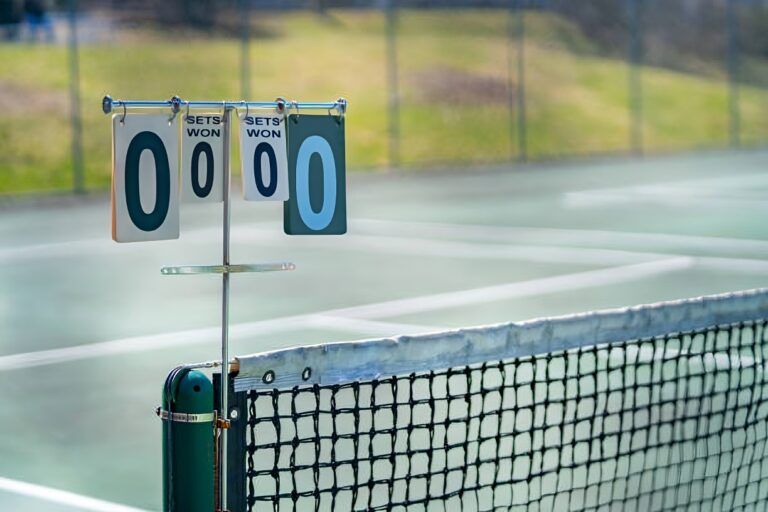
The unique three-number scoring system
The scoring system constitutes three parts, each revealing crucial information about the game's status.
- Server Score: The first number signifies the serving team's score.
- Receiver Score: The second number outlines the receiving team's score.
- Server Number: The final number indicates which player on the serving team is currently serving (1 or 2).
This captivating rhythm of counting mirrors a heartbeat keeping the game alive, energetic, and continually evolving.
Scoring scenarios and examples
Understanding scoring scenarios is vital for players seeking to maximize their competitive edge.
- Winning a Point: Players can score points only when serving; successfully getting the ball into the non-volley zone or executing effective shots can help garner returns.
Familiarizing oneself with various situations that could arise during a match can foster adaptability, enabling teams to pivot their strategy based on evolving dynamics.
Calling the score: Clear communication is key
Effective communication regarding score-calling is essential.
- Proper Sequence: Players must announce the score in the order of server score, receiver score, and server number this clarity helps maintain the flow of the game.
Much like the coordination exhibited by an orchestra, precise communication sets the foundation for teamwork, ensuring every player remains in sync.
Doubles pickleball shots: Expanding your arsenal
In every competitive sport, versatility often spells the difference between victory and defeat. An extensive arsenal of shots empowers players to navigate the court dynamically and counter opponents’ strategies.

The volley: When to attack
Knowing when to execute a volley can turn the tide of a match.
- Technique & Timing: Executing the volley at the right moment, particularly in fast-paced exchanges, can foster opportunities for decisive points.
The volley requires players to dance a thin line between eagerness and caution, much like timing one's steps in a graceful waltz.
The dink: Mastering the soft game
The dink serves as a strategic layer in skilled play.
- Placement & Strategy: Ensuring that the ball barely clears the net while landing in the kitchen area takes finesse. This gentle touch captivates opponents, leading them into a false sense of security before launching into a more powerful attack.
Navigating this aspect requires both mental acuity and physical capability; the ultimate balancing act.
The drop shot: Catching your opponents off guard
A well-timed drop shot can shift momentum in thrilling ways.
- Execution & Deception: Players should aim to send the ball just over the net, effectively catching opponents off-guard and forcing them to scramble for position.
This moves likens the sudden gust of wind that can shift a ship's course, pushing players into adapting their strategies at the drop of a hat.
The drive: Power and precision
Now, let us consider the drive.
- Power & Accuracy: This aggressive shot propels the ball ferociously, aiming for specific zones on the opposing side of the court, introducing pressure that can lead to forcing mistakes.
Focusing on efficiency during this shot can lead to some awe-inspiring plays, much like a well-executed move in an action film.
The lob: A defensive and offensive weapon
Finally, the lob is a curious blend of strategy as both an offensive and defensive maneuver.
- Defensive Lob versus Offensive Lob: A defensive lob can shift the tide, providing time for players to regain their footing, while an offensive lob can catch opponents unprepared, soaring over their heads.
Understanding this dynamic allows players to expand their skill set, imbibing even more excitement into the game itself.
Winning strategies for doubles pickleball
Winning in doubles pickleball is not merely about individual prowess; it involves moving harmoniously as a cohesive unit. Building winning strategies can lead to collective victory on the court.
Get to the kitchen!
One of the primary strategies revolves around getting to the kitchen line as quickly as possible.
- Positioning & Advantages: From this spot, players can leverage their skills to either volley potent shots or execute dinks effectively, commanding their space.
Much like guiding a ship toward the harbor, positioning at the kitchen line marks players’ territory against opponents.
Aim between your opponents
Targeting the gaps between your opponents can shift gameplay.
- Creating Openings & Forcing Errors: By sending the ball to these openings, players force opponents to stretch, potentially leading to mistakes that can easily convert into points.
This strategy fosters creativity, as players must constantly adapt and innovate their shots, building layers to their game.
Return serve deep
Focusing on deep returns can stifle opponents' plays.
- Return of Serve Strategy: Deep returns limit the ability for a fast volley, forcing a softer shot from the receiving team.
This tactic is comparable to establishing a solid defense in a basketball game; it sets boundaries and limits scoring opportunities for the adversary.
Communicate effectively
None of the aforementioned strategies would come to fruition without proper communication. Verbal cues and non-verbal gestures signal intentions and promote teamwork.
- Verbal Cues: Calling out plays, processes, and mistakes fosters cohesion and understanding among teammates.
Communication on the court serves as the map guiding players through their quest for success, ensuring collaboration is at the forefront.
The art of stacking
Lastly, the art of stacking is an innovative strategy that fosters positioning.
- Benefits & Drawbacks: Players alternate their movements to maximize their strengths, creating a dynamic synergy.
Embracing stacking can be likened to a well-choreographed dance, each player complementing the other to create breathtaking performances on the court.
Pickleball etiquette: Playing with respect and sportsmanship
As players, adhering to pickleball etiquette is crucial for maintaining a spirit of camaraderie and mutual respect on the court. Upholding these values becomes paramount to enriching the community surrounding the sport.
Respecting your opponents and the game
It's vital to respect both your opponents and the game itself.
- Sportsmanship & Etiquette: Engaging positively fosters a harmonious environment that allows players to focus on growth, skill improvement, and joy in play.
Respect mirrors the grace of the sport; it defines the very essence of the pickleball community.
Making fair line calls
Making line calls reflects integrity and honesty.
- Honesty in Play: Players should be forthright, acknowledging when they make mistakes to uphold game fairness.
This commitment to truth nurtures trust, encouraging players to focus squarely on performance, unfettered by disputes.
Having fun is the ultimate goal
Ultimately, the spirit of pickleball lies in enjoyment.
- Enjoyment & Camaraderie: The connections developed on the court form friendships that carry beyond the game, cultivating a community founded on shared experiences.
As the clock ticks down and matches end, it’s the bonds forged through laughter and competition that truly matter.
Conclusion: Ready to take the court?
Mastering the rules of pickleball is just the first step. Whether you’re a seasoned player or just beginning your journey, an eagerness to learn and practice continues to open new opportunities and experiences. Finding local communities, clubs, or online resources can help expand your knowledge and connect you with fellow players who share your passion. As you lace up your shoes and pick up your paddle, remember that every match is a new opportunity a canvas awaiting your brushstrokes of skill, teamwork, and enjoyment. So step onto the court with confidence, camaraderie, and an indomitable spirit, for pickleball is not just a game it’s a journey filled with joy, strategy, and unbreakable connections.










